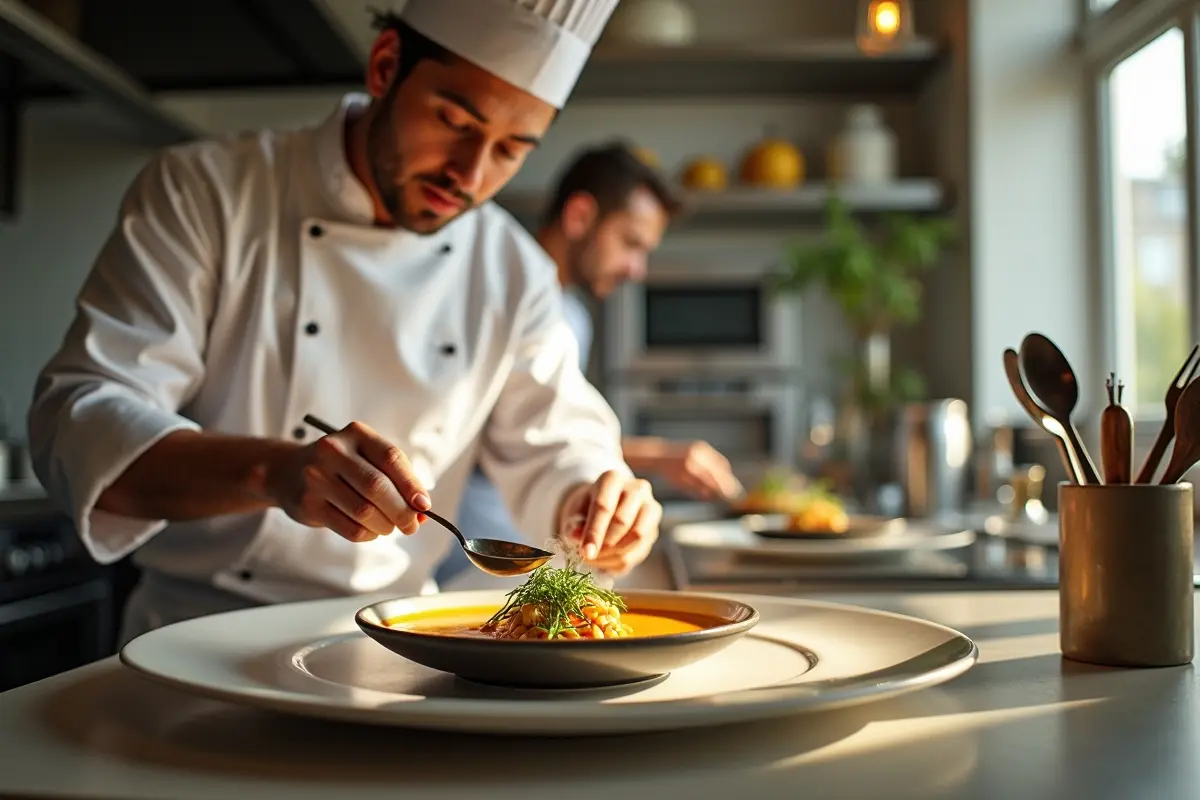There’s something profoundly comforting about a steaming bowl of soup. It warms us from the inside out, evokes memories of home, and provides sustenance when we need it most. Yet in today’s culinary landscape, the humble soup has undergone a remarkable transformation.
No longer confined to traditional recipes passed down through generations, soups have become canvases for creativity, experimentation, and cross-cultural fusion. Modern home cooks and professional chefs alike are breathing new life into classic recipes, honoring their roots while pushing boundaries to create something entirely fresh and exciting.
The evolution of soup reflects broader changes in how we approach food today. We crave authenticity but also novelty. We want the comfort of familiar flavors paired with the excitement of discovering something new.
This balance between tradition and innovation has given rise to a renaissance in soup-making, where classic recipes serve as inspiration rather than strict instruction. The result is a vibrant world of soups that respect their origins while embracing contemporary tastes, ingredients, and techniques.
Building on Tradition: Global Flavors Meet Familiar Foundations
The beauty of reinventing classic soups lies in understanding what made them beloved in the first place. Traditional chicken noodle soup, for instance, has been a staple across cultures for good reason—it combines protein, vegetables, and starch in a flavorful broth that nourishes body and soul. Modern interpretations take this foundation and infuse it with unexpected elements. Asian-inspired versions might incorporate miso paste, ginger, and bok choy, while Mediterranean variations add harissa, chickpeas, and preserved lemon.
Even simple broths are getting creative makeovers. Take, for example, the Turkey Ramen soup recipe from Dad Cooks Dinner, which exemplifies this perfectly, transforming leftover Thanksgiving turkey into a hearty bowl inspired by authentic ramen.
Using turkey stock enriched with soy sauce, mirin, and sake, then loaded with mushrooms, napa cabbage, and ramen noodles, it creates a satisfying fusion that honors both American holiday traditions and Asian culinary techniques.
Texture and Temperature: Breaking Conventional Rules
Modern soup creativity extends beyond flavor combinations to challenge our expectations about texture and temperature. The rise of chilled soups has moved well beyond gazpacho, with innovative cooks creating cold variations of traditionally hot soups.
Velvety chilled corn soup with crispy pancetta, or a refreshing cucumber and avocado blend, demonstrates that soup doesn’t always need to be served steaming to be satisfying.
Texture has become a playground for experimentation. Where classic soups often aimed for uniformity—whether completely smooth or consistently chunky—contemporary versions celebrate contrast. A pureed butternut squash soup might be topped with crispy sage leaves, toasted pepitas, and a drizzle of brown butter, creating multiple textural experiences in a single spoonful. Crunchy elements like homemade croutons, fried shallots, or toasted nuts add dimension that keeps each bite interesting.
The consistency itself has become more varied. Some modern soups blur the line between stew and broth, offering a heartier, more substantial meal. Others go lighter, featuring clear, delicate broths that showcase pristine ingredients floating within. This range allows soups to adapt to different occasions and appetites, from light starters to complete meals.
Ingredient Innovation: Seasonal and Sustainable Choices
The farm-to-table movement has profoundly influenced how we approach soup-making. Rather than following recipes that call for specific ingredients regardless of season, modern cooks are letting market availability guide their creativity. This approach not only results in fresher, more flavorful soups but also encourages improvisation and personal expression.
Root vegetables that might have been overlooked in classic recipes are now starring ingredients. Parsnips, celery root, and turnips bring earthy sweetness to pureed soups. Forgotten greens like mustard greens, collards, and Swiss chard add nutritional value and bold flavors to brothy soups. Even the humble cabbage has been elevated, appearing in sophisticated versions that highlight its natural sweetness and versatility.
Plant-based alternatives have opened new possibilities for those avoiding dairy or meat. Coconut milk creates luxurious creaminess in curried soups, while cashew cream provides richness without heaviness. Nutritional yeast adds cheesy, umami notes to broths, and miso paste delivers the savory depth traditionally achieved through long-simmered bones. These substitutions aren’t compromises—they’re opportunities to explore entirely new flavor profiles.
Garnishing with Purpose: Finishing Touches That Transform
Perhaps nowhere is creativity more evident than in how modern soups are garnished and finished. What was once an afterthought has become an integral part of the dish, adding not just visual appeal but crucial flavor and textural elements. Fresh herbs aren’t simply sprinkled on top anymore—they’re turned into vibrant oils, pestos, and chimichurris that can be swirled into the soup for bursts of freshness.
Acidic elements have gained recognition for their ability to brighten and balance rich soups. A squeeze of citrus, a splash of vinegar, or a dollop of tangy yogurt can transform a heavy, one-dimensional soup into something lively and complex. These finishing touches teach us that soup-making doesn’t end when the pot comes off the stove—it continues until the moment of serving.
Spice blends and condiments offer another avenue for personalization. Providing diners with options like crispy chili oil, toasted spice mixes, or herb-infused creams allows each person to adjust their bowl to their preferences, making the experience interactive and customizable. This approach acknowledges that modern eaters enjoy having agency over their food, even within a prepared dish.
The reinvention of classic soups represents more than culinary trend-chasing. It reflects our evolving relationship with food, where tradition and innovation coexist harmoniously. By honoring the foundations laid by generations before us while fearlessly experimenting with new ingredients, techniques, and cultural influences, we create soups that satisfy both our need for comfort and our desire for excitement.
Each bowl becomes a story—one that respects the past while embracing the present, offering warmth and nourishment alongside surprise and delight. In this way, the simple act of making soup becomes an expression of creativity, a celebration of available ingredients, and a deeply personal interpretation of what it means to feed ourselves and those we love.




